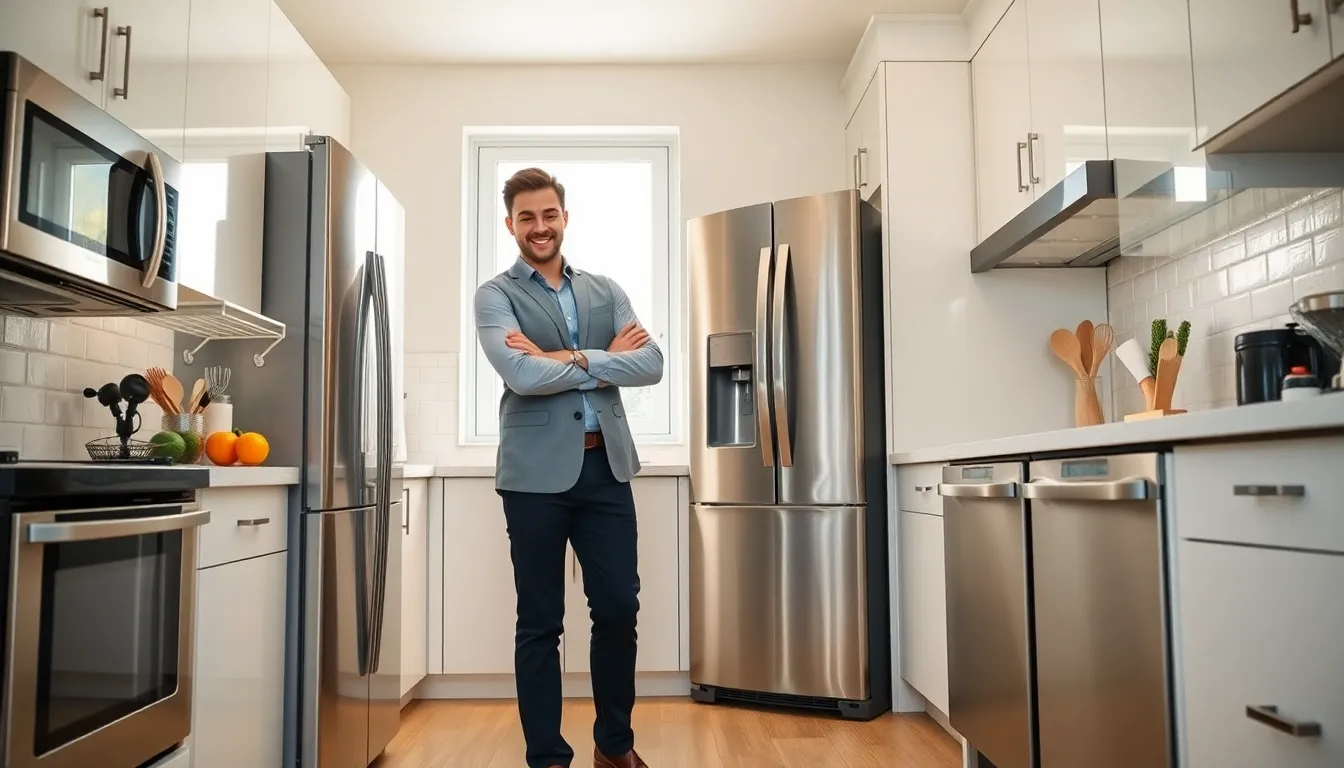Imagine walking into your home and having the lights greet you like an enthusiastic puppy. Smart home lighting control isn’t just about flipping switches; it’s about creating a living space that adapts to your lifestyle. With the flick of a finger or a simple voice command, you can set the mood for movie night or ensure your home is as bright as a thousand suns for that all-important Zoom call.
Table of Contents
ToggleOverview of Smart Home Lighting Control
Smart home lighting control offers advanced solutions for convenient management of lighting systems. Users can personalize and automate their lighting through integrated systems. Voice commands and mobile apps make it easy to adjust settings without physical intervention.
Energy efficiency stands as a primary benefit. Smart lighting systems can automatically dim or turn off lights in unoccupied rooms. This function reduces energy consumption and lowers electricity bills.
Customization options cater to different needs. Various presets allow users to create specific lighting scenes for activities such as reading or entertaining guests. Smart sensors can also detect natural light and adjust indoor lighting accordingly, optimizing illumination throughout the day.
Integration with other smart devices enhances the user experience. For instance, lighting can sync with smart thermostats for comprehensive home automation. Furthermore, users can link their lighting with security systems, enabling lights to flash during security alerts, adding an extra layer of safety.
Smart home lighting control emphasizes convenience and efficiency. With features like scheduling, users can pre-set times for lights to turn on or off. This aspect not only supports energy savings but also provides comfort, making homes feel welcoming when users arrive.
Accessibility plays a crucial role. Many smart lighting systems cater to individuals with disabilities, allowing them to control lighting easily using voice commands or mobile apps. Customizable settings ensure every user enjoys the full benefits of smart lighting.
Smart home lighting control forms an essential component of modern living spaces, combining efficiency, convenience, and security.
Benefits of Smart Home Lighting Control
Smart home lighting control offers numerous advantages, significantly improving daily living experiences through efficiency and convenience.
Energy Efficiency
Smart lighting systems contribute to energy savings by automatically minimizing power usage in unoccupied spaces. Sensors detect room occupancy, triggering lights to dim or turn off when no one is present. This feature can decrease energy consumption by up to 30%. Users easily schedule lights to operate only when needed, leading to reduced electricity bills. Smart bulbs also provide longer lifespans compared to traditional bulbs, resulting in less frequent replacements. With the ability to adjust brightness levels, smart lighting ensures optimal energy use without sacrificing comfort.
Enhanced Convenience
Convenience plays a crucial role in smart home lighting control. Users can manage lighting through voice commands, remote controls, or mobile apps. Scene creation allows for tailored lighting settings that suit various activities, such as reading or hosting a dinner party. Scheduling capabilities enable lights to turn on or off at specific times, enhancing home security by creating the illusion of occupancy. Integration with other smart devices further streamlines control, allowing for synchronized operation with security alarms and climate systems. This seamless connectivity significantly simplifies everyday tasks while promoting a comfortable living environment.
Types of Smart Lighting Systems
Smart lighting systems include various technologies that enhance user experience and convenience. Each type offers unique features suited for different needs.
Smart Bulbs
Smart bulbs connect directly to Wi-Fi, enabling control through mobile apps or voice commands. These bulbs provide adjustable brightness and color options to create desired atmospheres. Users can choose from millions of colors, making them ideal for mood lighting. Many smart bulbs are energy-efficient, using up to 80% less energy than traditional incandescent bulbs. Compatibility with platforms like Amazon Alexa and Google Assistant allows seamless integration into existing smart home setups.
Smart Switches and Dimmers
Smart switches and dimmers replace conventional wall switches, providing enhanced control over lighting. They enable users to adjust brightness levels and set schedules conveniently. Through a single switch, multiple light fixtures can be controlled, allowing for cohesive lighting schemes. Many devices include energy monitoring features, helping assess energy usage patterns. Integration with smart home ecosystems facilitates automation, enhancing overall functionality and minimizing the need for multiple remotes or apps.
Popular Smart Lighting Brands
Numerous brands excel in smart lighting solutions, delivering various options for consumers seeking cutting-edge technology.
Philips Hue
Philips Hue stands out as a leading brand, offering a wide array of smart bulbs and fixtures. Color customization allows users to choose from 16 million colors, creating the ideal atmosphere for any occasion. Integration with smart home systems enhances usability, enabling effortless control through voice commands and mobile apps. Users enjoy features like geofencing, which automatically adjusts lighting based on location. Energy efficiency is another hallmark, since Philips Hue products consume significantly less energy compared to traditional bulbs. The extensive ecosystem includes outdoor lights, making it suitable for comprehensive home illumination.
LIFX
LIFX provides a robust alternative, renowned for its high-quality, vibrant smart bulbs. Unlike many competitors, LIFX products connect directly to Wi-Fi, eliminating the need for a separate hub, which streamlines setup. Users appreciate the wide spectrum of colors and effects, perfect for setting the mood or enhancing home security. Smart scheduling features enable automation based on personal preferences and daily routines. Additionally, LIFX integrates seamlessly with popular smart home platforms, simplifying operation through voice control and app settings. The brand focuses on energy-efficient bulbs, contributing to lower electricity bills while providing lasting performance.
Conclusion
Smart home lighting control represents a significant leap in how individuals manage their living spaces. With intuitive features like voice commands and mobile app integration, it’s easier than ever to create the ideal atmosphere for any occasion.
The energy efficiency and cost savings associated with these systems can’t be overlooked. By automating lighting based on occupancy and natural light, users not only contribute to a greener planet but also enjoy reduced energy bills.
As technology continues to evolve, the possibilities for personalization and integration with other smart devices will only expand. Embracing smart lighting solutions can transform any home into a more comfortable and efficient environment.



